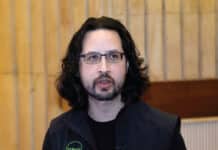Born and brought up in the capital of India, Mukul Mahajan, director- sales, Tetra Information Services (P) Ltd, started his career at Pertech Computers Limited. But, as it is said, destiny has its own plans. The shutting down of Pertech presented him with an opportunity, because he had always yearned for more independence in his professional life. So he embarked on an entrepreneurial journey, with open source as one of the key building blocks of his business. In a tete-a-tete with Syeda Beenish of OSFY, he shares the opportunities open source offers and how much acceptance it has earned in the market. Excerpts…
Early days
After completing my B.Tech from Jaipur, I was able to successfully grab a good opportunity with Pertech Computers Limited. I worked there for about five years. Though things were going great, I felt that my life was not complete as I wanted to do something on my own.
So I started my company, Tetra Information Services (P) Ltd, in 1995. Two friends of mine, Biswajeet and Deepa, joined my startup.
When open source started taking off in the country, we could see the potential it had in the market. To be precise, the open source movement started around 1998, i.e., 20 years back, and we got involved with it right away. We were in the hardware business, and were looking at business opportunities where we could avoid being locked in with the OEMs, in order to be in direct connect with our customers. We could see that only open source would give us that option. And, in the process, we also realised that it was a very cost-effective option. So, we adopted it as part of our business offerings. We now feel that this was the best professional decision we have taken. The motto of Tetra Information Services is, ‘We provide open source solutions for business needs’.
What open source means to me: Freedom
I love to: Travel to off-beat locations like Leh and Ladakh
My favourite movie: Ab Tak Chappan
My favourite sport: Cricket
I want to… Go on a world tour
We sensed that open source had staying power
Realising the potential of open source, we knew that it was here to stay. So, at Tetra, we launched a mission to promote open source and take it closer to the corporates and SMEs. To do this, we started participating actively in industry events conducted by organisations like EFY, PHDCCI, etc.
The path we’d chosen was not an easy one! It was tough to convince people about the merits of open source and propose solutions specifically meant for them. We had to convince customers about the long-term viability of the solutions.
During the first few years, the biggest challenge was convincing organisations that open source is a viable solution for them. Next, our efforts went into convincing people to pay for open source. The two things that helped us to overcome these obstacles was our faith in the technology and our persistence. We always believed that open source is here to stay, and that helped us to win customers over.
How easy is it to use open source for:
1. A home user who is not a techie
Based on my experience, for a home user, open source is difficult to use, as it still requires some sort of technical tweaking, especially when working with various devices.
2. A techie home user
For techie home users, open source is the best partner in crime. It provides them a platform to develop applications for the home at a low cost, while fostering innovation.
The essence of open source
Open source is not merely a technology that is free. This was the misconception we tried educating people about. Open source (OS) can be categorised as pure OS and commercial OS. Pure OS is when the organisation has an internal team to maintain its open source solutions. This team customises FOSS solutions to suit the needs of particular departments or verticals that need secured infrastructure without external management. Commercial OS allows external management, where companies like us come into the picture.
I agree that there are a lot of open source solutions that are available for free download. But to enjoy their real benefits, firms need to develop their internal expertise or seek expert support from the market. Also, developing open source based products means affordable solutions to the customers. In my pitch, I always make it clear that open source is not free but the most cost-effective or ‘value for money’ solution. Of course, for technical organisations like ours with internal expertise, open source can still be free. If customers are ready to invest in in-house expertise, then open source becomes free for them as well.
My relationship with open source
We have been associated with open source through thin and thick. As shared earlier, our faith in open source kept us going. The initial few years were more about evangelising, and within the firm, developing solutions that we could market. At the same time, we attended events that promoted open source. After that, we had to deploy and give long-term support for the solutions we implemented. So, overall, the journey was tough but our satisfaction came from the experience and knowledge we gained.
I have not been a contributor of code but I have, in my own way, worked towards positioning open source, helping it gain mindshare across industries. I love the community aspect of open source. The whole concept is so beautiful and promotes the sharing of knowledge. We are not involved too much with the community, per se. I am more involved in the business deployment side of it. In collaboration with the industry, the community can further popularise open source and make it mainstream. For me, open source is synonymous with freedom.
The industry is welcoming open source with open arms
After convincing our customers in different industries about the benefits of open source, our next line of action was to help them experience the agility of FOSS and the freedom it offers users to do their own thing. The defence vertical is pro pure open source, as this model offers users the freedom to deploy solutions in their internal networks and tweak them as per their will. The government has also adopted it to a certain extent. Most of the solutions getting deployed are on open source stacks. The BFSI industry has adopted it well too, and most of the solutions in this segment work on open source technologies. Industry is moving more towards the cloud, which is based on a subscription model. Most of the underlying software on the cloud too are built using open source technologies. In education and research, open source is mainstream, as it thrives on innovation, which is the hallmark of these two fields.
The future
What has kept me motivated over the years is my dream of making India a hub, where open source based products get developed and we are recognised globally as one of the significant contributors instead of just being consumers of open source.
Organisations like Red Hat, Jasper, Vtiger, etc, are using open source technologies, building products on top of them and providing OEM supported open source products. They have a huge market in the government and BFSI sectors. There are a lot of organisations making cloud-based products using open source technologies. For them also it is a viable business solution, as it allows them to make products without paying any royalties to OEMs.
At a time when we are witnessing the mushrooming of startups across India, thanks to the support from our government, we are also seeing a number of them using open source extensively in their IT infrastructure. This is because open source allows them to adopt technology at a very low cost, which is essential for their growth.
Last but not the least, for setups like ours, open source will remain a viable proposition, as it allows us to offer solutions to SMEs at a very low cost, helping them to remain profitable.



















































































Mr Mukul Mahajan, did you contribute anything to the OSS community but take liberty in making a broad statement as if you invented it.